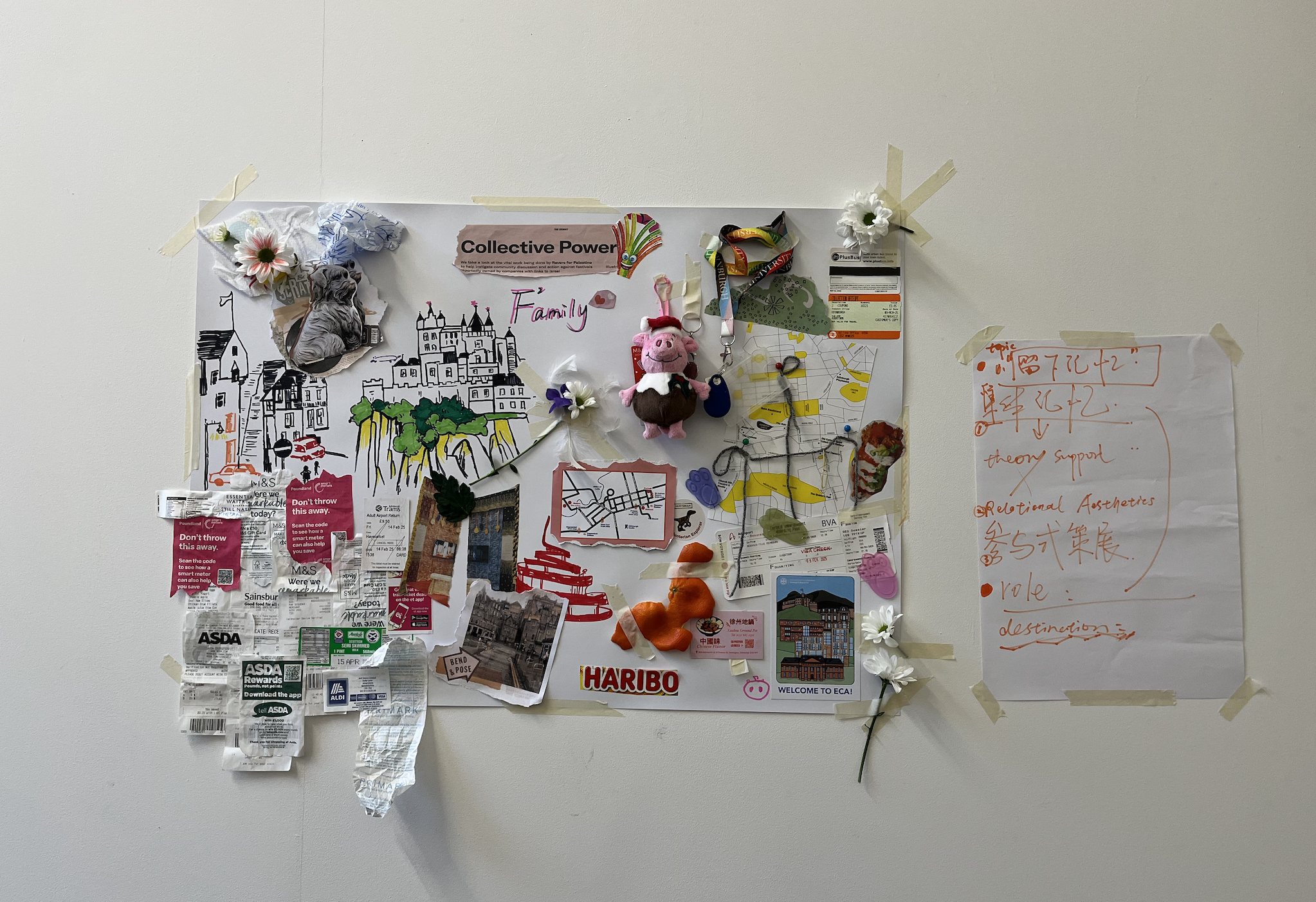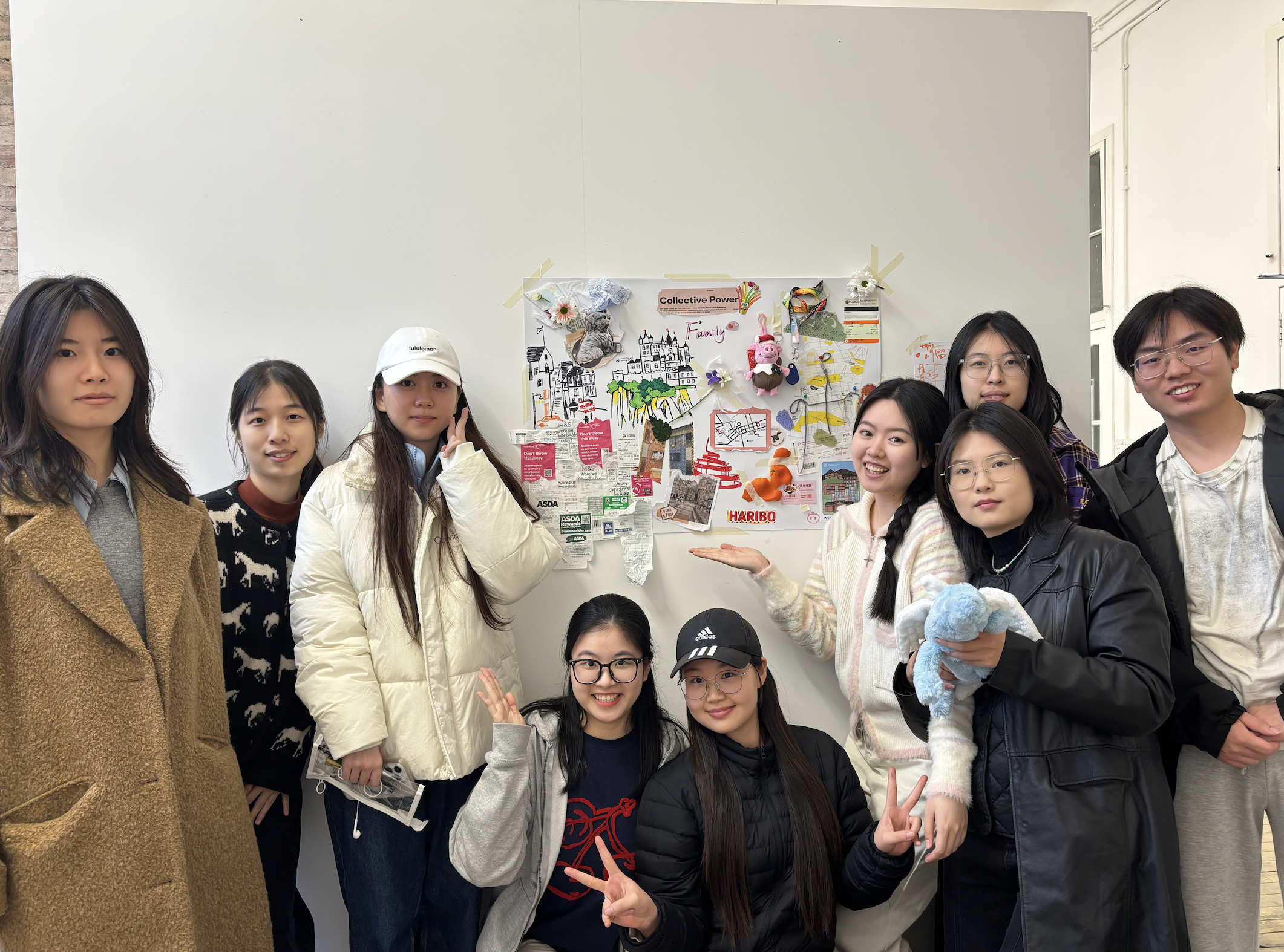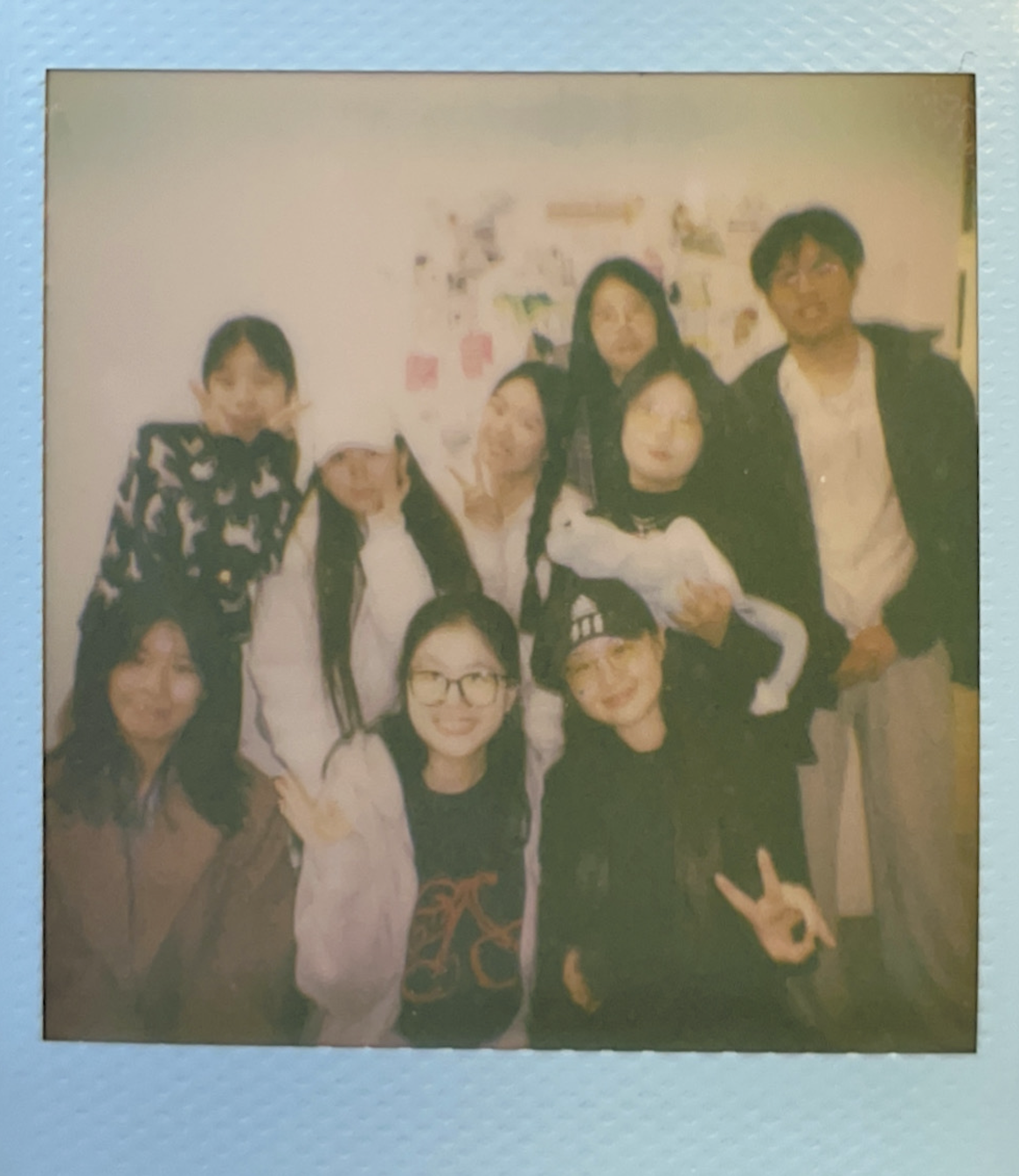Our group held an exhibition entitled ‘Echoes of Edinburgh: The Construction of Collective Memory’ at Summer Hall on 4 April

Exhibition theme:
We chose ‘Memories of Edinburgh’ as the central theme of this impromptu exhibition, which aims to explore the dynamic relationship between urban space and individual experience. For students who live here for a short period of time, Edinburgh is not only a place of residence in the geographical sense, but also a container for emotions, memories and identities. The city is both historical and contemporary; it is represented in maps and monuments, but also in the fragments of everyday life, the details around the corner and the psychological landscape of individuals.
In the contemporary context of increasing post-geography and mobility, individual memories of the city are often non-linear, fragmented and highly subjective. Therefore, we hope to evoke these fragmented urban perceptions through instant creation, allowing personal narratives to collide and intertwine in a shared space to form a portrait of the city with a sense of mobility and emotional warmth. The choice of this theme not only responds to our deep emotional connection with Edinburgh but also provides a platform for urban memories to be ‘visualised, heard and empathised with’. The potential of art as a tool for memory generation, emotional expression and spatial reconstruction is reflected in the experimental exhibition structure.
Curatorial approach: This project is an experimental, real-time, process-oriented micro-exhibition on the theme of ‘memories of Edinburgh’. We invited the group members to participate in the creation together on site within a limited time frame of two hours, and constructed a ‘memory wall’ full of personal experiences and emotional imprints through the instant generation of images, texts and symbols. The exhibition emphasises that the creative process itself is part of the content of the exhibition, exploring ‘exhibition’ as a temporal and spatial structure for collective production, negotiation and sharing. This practice blurs the boundaries between artistic creation, audience participation and exhibition presentation, drawing on the concepts of participatory art and process-based curating. As Suzanne Lacy puts it: ‘Art is not only “presented”, but also “co-created” and “intervened in”.’ The intention is to stimulate individuals to actively recall and recreate their memories of the city, while also constructing an exhibition relationship that coexists with presence and emotional resonance. In the final collective gathering, ‘watching’ itself becomes part of the exhibition structure, completing the transformation from personal expression to public presentation.
This exhibition practice can also be seen as a response to Nicolas Bourriaud’s ‘Relational Aesthetics’. As Bourriaud points out in his theory, art can become a social space for constructing interpersonal relationships, rather than just an aesthetic dialogue between the viewer and the object. 1 In this sense, we have transformed the exhibition space into a temporary field of interaction – the dialogue between creators, the viewer’s involvement in the process, and the emotional resonance in the collective onlookers are all inseparable parts of this ‘exhibition’. Through real-time creation and on-site interaction, we seek to make art a way of generating relationships and stimulating communication, so that the exhibition becomes a co-presence of emotions and memories in a specific time and space, rather than a fixed display of the results of a display. This exhibition and performance approach, with its focus on process and collaboration, also reflects the idea of ‘art as a model for social interaction’ advocated by Bourdieu. In addition, the exhibition also fits in with Jacques Ranciere’s concept of the ‘emancipated spectator’: it reinforces the idea that participants are ‘not spectators, but co-creators’.
Exhibition format: This exhibition takes a ‘process-oriented’ and ‘participatory’ approach as its core, combining improvisation and collective presentation to create a time-limited ‘temporary exhibition’. Its format combines the characteristics of relational aesthetics and socially engaged art, emphasising the generative process of the work, the interactive relationship between participants, and the co-construction of emotions and memories in the creative space. The artworks in the exhibition are not pre-made but are created during the exhibition. The focus is on the creative process itself rather than the finished product. The creative material is a piece of A1-sized white paper, and each person completes this co-creation wall with their own prepared materials or improvised creations. Some students used the air tickets they had accumulated during their time in Edinburgh, the labels of their favourite snacks, the little objects they had bought in Edinburgh, or hand-painted their own impressive landscapes, etc. The whole process was recorded through photography and video.
Participants and audience: all group members and students from other majors in Edinburgh. Due to the time constraints of the exhibition, it is only targeted at Edinburgh students. Members of our group must participate in every aspect, while students from other majors can participate in or watch the process.
Resources needed: the venue, paper, tables, chairs, and exhibition walls were provided by the school; post-its, markers, stickers, tape, etc. were brought by the students. The camera equipment was provided by the students. Therefore, no sponsorship was needed for this exhibition.
Exhibition schedule: 4 April
17:15 – 17:45
Introduction and setting up, first positioning the cameras and sticking the paper on the co-creation wall. A student gave a brief introduction to the purpose and significance of the exhibition and the method. Then everyone quickly introduced themselves and shared what they had experienced or felt in Edinburgh, as well as explaining what they would be creating and where the inspiration and materials came from.
17:45 – 18:45
After the introductions, everyone took turns to start creating on the co-creation wall, sometimes two or three people together in order to save time. Some people wrote text, some people made art collages, and I painted memories of Edinburgh.
18:45-19:15
In summary and ceremony, everyone expressed their feelings and opinions about the exhibition, and finally took a group photo to commemorate the occasion and cleaned up the venue.

Exhibition ethics:
This exhibition is based on open collaboration and instant creation, emphasising the shared expression of individual experiences and urban memories. Throughout the process, we uphold the following ethical principles:
-
Voluntary participation and respect for freedom of expression All participants participate in the creation of the work on a voluntary basis, respecting each other’s different backgrounds, emotions and ways of storytelling. There are no censorship or restrictions in the creation process, ensuring freedom, safety and sincerity of expression.
-
Negotiation and listening in collective creation In the process of co-creation, we emphasise a sense of space for negotiation, avoid interfering with others’ expressions, encourage dialogue, listening and mutual support, and promote the equal generation of collective experiences.
-
Respect for privacy and the principle of non-reproduction The content presented in the exhibition is limited to on-site experiences. No video recording or recording without consent will be made, unless with the express permission of all participants. We respect privacy, vulnerability and emotional boundaries in expression.
-
Temporary space care and responsibility As a short-term exhibition that takes place in a school, we promise to properly clean up the site after the event, leaving no traces of damage or occupation, while maintaining respect for public resources and using them sparingly.
-
Reflect on power and curatorial responsibility The planning team does not act as an authoritative decision-maker but as an organizer and coordinator of the co-creation process. We refuse to symbolize the expressions of others and always remain sensitive and reflective of the participation process.
Summary:
This improvised exhibition with the theme ‘Memories of Edinburgh’ has made me re-evaluate the form of ‘exhibition’ itself. It is no longer about the display of works and the gaze of the audience, but rather a process, a relationship, and a co-creation that takes place over time. Through improvising with the group members within a limited time frame, I experienced first-hand the emotional flow of the creative process and the co-construction of space. I realised that an exhibition does not always have to be physical, nor does it always have to be ‘finished’. Even if it is temporary and fleeting, as long as it carries expression and communication, it has value. This process-oriented, participatory exhibition practice has made me think about another possibility of art – not the pursuit of perfect results, but the relationships, dialogues and resonances established between people in the creative process. In addition, this practice has also made me more aware that curating is a responsibility. When organising a small-scale exhibition like this, we need to consider not just ‘how to do it’, but also ‘how to make everyone feel respected and heard’. This has made me begin to understand why contemporary curators are increasingly emphasising ethics, dialogue and the subjectivity of participants. Overall, this exhibition has taught me that art can be very everyday and direct, and can also touch on memory and the city very gently; and that curating can also be an art of listening and organisation.

Bibliography
Bourriaud, N. (2002) Relational aesthetics. Dijon: Les Presses du réel.
Lacy, S., 1995. Mapping the terrain: New genre public art. (No Title).
Rancière, J. and Elliott, G., 2007. The emancipated spectator. (No Title).


Leave a Reply